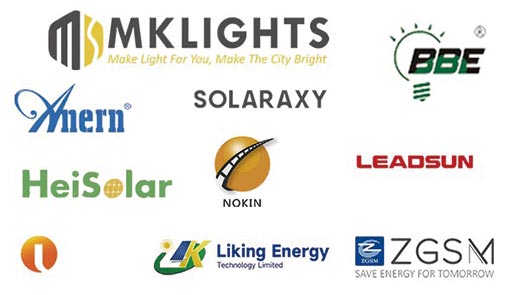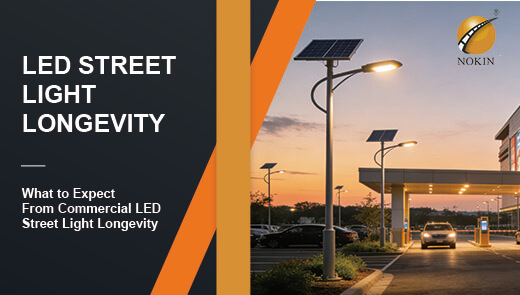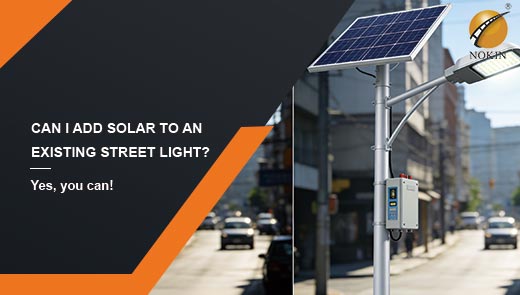Advantages of Solar Street Lights in Developing Countries
In developing countries, the lag in infrastructure development is particularly evident in the field of lighting. Many remote areas and rural communities have long faced issues with insufficient power supply, and the lack of nighttime lighting not only affects residents' daily lives but also hinders the development of local economic activities and the maintenance of social security. Solar street lights, as a lighting solution powered by clean energy, are increasingly becoming an important means to address the lighting challenges in developing countries due to their unique technical characteristics. This article will systematically examine the situation of solar street lights in developing countries from multiple dimensions, including infrastructure optimization and socio-economic development.
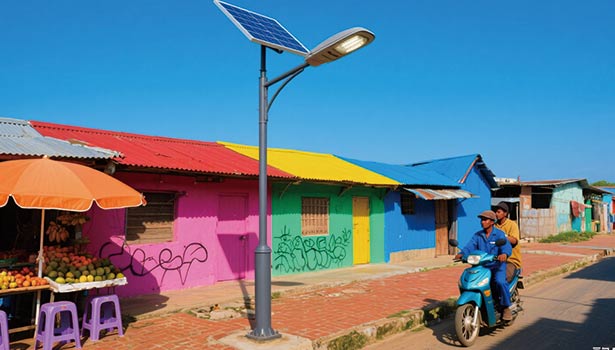
Challenges in promoting solar street lights in developing countries
High initial investment costs
Although solar street lights have low long-term operational costs, the initial equipment procurement and installation expenses represent a significant financial burden for many cash-strapped developing countries. Especially in some impoverished regions, where government budgets are limited, it is difficult to bear the upfront costs required for large-scale deployment of solar street lights, which to some extent hinders their widespread adoption.
Varied technical standards and quality
Currently, the market offers a wide variety of solar street light products with inconsistent technical standards and significant quality variations. Some developing countries lack a comprehensive product quality supervision system, leading to the circulation of substandard products in the market. These substandard products not only have short lifespans and poor lighting performance but may also cause frequent malfunctions, affecting user experience and thereby having a negative impact on the promotion of solar street lights.
Shortage of local technical talent
Maintenance and troubleshooting of solar street lights require specialized technical knowledge, yet many developing countries lack the necessary technical personnel. If a street light malfunctions, it may not be repaired in a timely manner, resulting in its inability to function properly. While some installation and maintenance tasks can be performed by locally trained residents, systematic technical support remains insufficient, posing challenges to the long-term stable operation of solar street lights.
How do solar street lights address infrastructure challenges in developing nations?
Grid independence and remote area access
Electricity infrastructure coverage is generally low in developing countries. In remote rural and mountainous areas, the cost of extending the grid can reach thousands of dollars per kilometer, and complex terrain further complicates construction efforts. This leaves large populations in a state of “darkness after sunset,” severely limiting nighttime activities.
Solar street lights completely eliminate dependence on traditional grids, achieving independent operation through photovoltaic panels for power generation and battery storage. This feature enables them to directly cover areas inaccessible to the grid, providing stable nighttime lighting for villages, rural roads, and remote communities without the need for massive investments in transmission lines and substations.
Rapid deployment and minimal infrastructure requirements
The installation of traditional street lights requires a series of supporting projects, such as cable laying and transformer installation. In developing countries, these projects often face delays due to cumbersome approval processes and lengthy construction periods. In contrast, the installation of solar street lights only requires the fixation of lamp posts and basic debugging. The deployment of a single set of equipment can be completed within a few hours, and the overall renovation of a community typically takes no more than two weeks. This rapid response capability demonstrates significant advantages in scenarios such as post-disaster reconstruction and emergency safety measures, enabling swift improvements to lighting conditions in target areas.
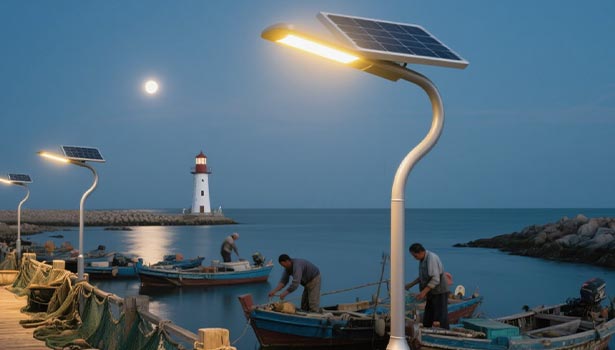
Reduced maintenance and technical support requirements
Traditional lighting systems require regular maintenance work such as circuit inspections and lamp replacements. However, developing countries generally lack professional technical personnel and spare parts supply systems, resulting in many street lights remaining in a state of “broken and unrepaired” for extended periods. Modern solar street lights utilize LED lighting and intelligent charge/discharge management systems, with core components having a lifespan of 5–8 years. The average annual maintenance frequency is only one-tenth that of traditional street lights. Their sealed design can withstand harsh environments such as high temperatures and humidity, significantly reducing the impact of natural conditions on equipment operation and adapting to the diverse climatic characteristics of developing countries.
What benefits do solar street lights provide for developing countries?
Longer business activities at night
The widespread adoption of solar street lights allows businesses to extend operating hours beyond lighting constraints, significantly enhancing the operational efficiency of small retail and service industries. Night markets, convenience stores, and other businesses can operate continuously under safe lighting conditions, meeting residents' nighttime consumption needs while increasing revenue for operators. In the healthcare sector, 24-hour clinics and pharmacies can now operate at night, enabling urgent and critically ill patients to receive timely treatment and chronic disease patients to purchase medication at any time, providing residents with round-the-clock basic medical care.
Job opportunities and employment
Improved nighttime lighting conditions have directly spurred nighttime commercial activities, opening new income channels for small vendors, food service workers, and other groups. In the installation and maintenance of street lights, local residents can participate in technical construction and daily maintenance work through skill training, creating stable job opportunities. Additionally, enhanced nighttime travel safety allows residents to engage in night shifts with greater peace of mind, expanding labor force employment options and indirectly promoting household income growth.
Improved security
Enhanced nighttime lighting has significantly reduced the concealment of criminal activities, resulting in an average decrease of over 40% in the incidence of street crimes such as theft and robbery. Clear lighting conditions facilitate community security forces in conducting patrols and controls, making the movements of suspicious individuals impossible to hide under the lights, and significantly improving the efficiency of police response. Additionally, residents are more likely to notice unusual behavior in well-lit environments, strengthening mutual surveillance awareness among neighbors and creating a community-wide safety network. This has significantly enhanced the sense of security for vulnerable groups such as elderly individuals living alone and women returning home late at night.
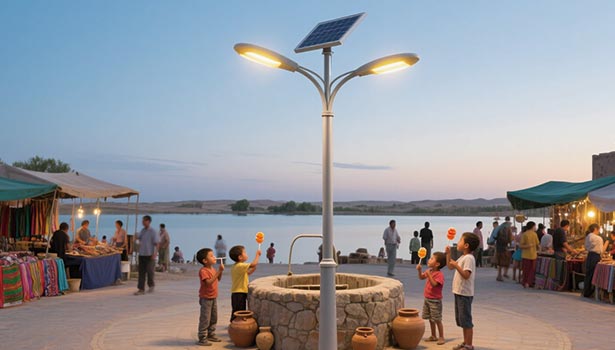
Reduces night accidents
Rural roads in developing countries often suffer from poor road conditions and inadequate signage, with low nighttime visibility further exacerbating travel risks. The installation of solar street lights has increased road illumination by over 60%, effectively reducing traffic accidents caused by avoiding potholes or vehicle malfunctions. For pedestrians, the clear lighting environment reduces the likelihood of accidentally entering the motor vehicle lane, lowering the nighttime walking accident rate by approximately 35% and significantly improving overall traffic safety.
Green energy advantages
Solar street lights derive their power from renewable energy sources, operating with zero emissions and zero pollution. Each unit reduces carbon emissions by approximately 0.5 tons per year. Excess electricity generated by the system can be fed into residential households via microgrid technology to meet basic electricity needs, reducing reliance on traditional energy sources. This clean energy application model not only lowers residents' energy expenses but also supports developing countries in achieving their low-carbon development goals, contributing to global climate governance.
Future development trends of solar street lights in developing countries
continuous technological upgrades and iterations
As photovoltaic technology continues to advance, the conversion efficiency of solar panels will further improve, enabling them to generate more electricity under limited sunlight conditions and better adapt to the unstable sunlight conditions in some regions of developing countries. Meanwhile, battery technology will also see breakthroughs, with batteries featuring larger storage capacity, higher charging and discharging efficiency, and longer service life gradually being adopted to address power supply issues during prolonged periods of cloudy or rainy weather. Additionally, intelligent control technology will become more mature, enabling street lights to automatically adjust brightness based on ambient light intensity and pedestrian/vehicle traffic conditions, further conserving energy.
The market size continues to expand
The demand for infrastructure development in developing countries continues to grow, and investment in lighting facilities will gradually increase. As the cost of solar street lights continues to decline, the price gap between them and traditional street lights will gradually narrow, and they may even become more competitive, driving more developing countries to choose solar street lights as their lighting solution. Meanwhile, the market potential in rural areas will be further tapped. As the rural revitalization strategy progresses, the demand for improved lighting conditions in rural areas is becoming increasingly urgent, and the adoption rate of solar street lights in rural areas will significantly increase.
Application scenarios are becoming more diversified
In addition to road lighting, the application scenarios for solar street lights will continue to expand. In parks, squares, campuses, industrial parks, and other locations, solar street lights will be adopted more widely. Furthermore, when integrated with 5G base stations, environmental monitoring sensors, and other devices, solar street lights will become an important component of smart urban infrastructure, enabling the integration of multiple functions such as lighting, communication, and environmental monitoring, thereby supporting smart city development in developing countries.
While solar street lights address infrastructure challenges and offer multifaceted benefits in developing countries, they also face challenges in promotion, including high initial investment costs, inconsistent technical quality, and a shortage of skilled personnel. However, their promising future trends in terms of technology, market, and application scenarios offer broad prospects for further application in developing countries. As technology continues to advance, costs gradually decrease, and related supporting measures are improved, solar street lights are expected to play a greater role in developing countries, becoming an important driver for their infrastructure development and sustainable growth.

